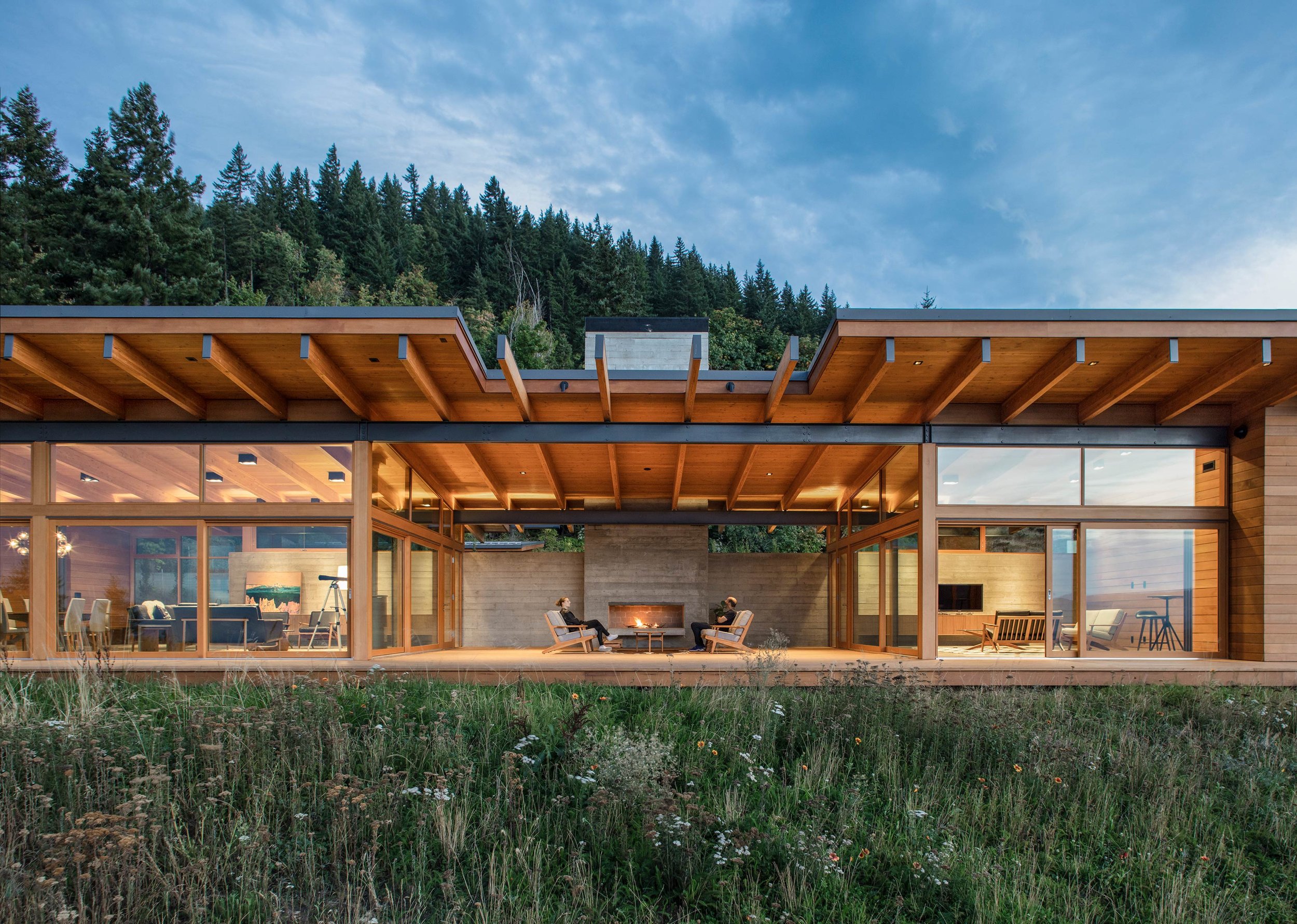Lone Feather Residence
Refined vineyard home expresses form and function
Lone Feather Residence is nestled at the top of a gentle hillside on a working vineyard. The house is sited to rest among mature conifer trees and positioned to maximize views of Oregon wine country’s rolling hills and verdant forests, and its post-and-beam structure is expressed in a deliberately minimal way so as not to detract from the landscape. A restrained material palette and intentional flow between indoor and outdoor spaces create a timeless, comfortable place where daily life is immersed in nature and small moments invite pause.
Location
Sheridan, OR
Size
3,170 sf
Year
2023
Achievements
2024 Gold Nugget Award, Award of Merit
Scott Edwards Architecture’s approach to the Lone Feather Residence is informed by the landscape and the desired lifestyle of the clients as they enter a new chapter. The clients are a couple who moved from the Midwest to the Willamette Valley to pursue their passion for making wine. They envisioned a quiet, subtle home for themselves surrounded by their vines and connected with this pursuit and place that they love.
Arriving at the house is a series of unveilings. The driveway is tucked above a linear outbuilding that houses the garage and a guest studio on separate ends, split by a portal-like pass-through that leads to the main residence further down the slope.
Stepping down a series of concrete stairs through the pass-through, the path opens to a courtyard and garden between the two buildings. Ahead, the glassy front entry of the home offers those approaching a hint of what is to come. Upon entering, one is greeted by an expansive view of the vineyards, forests, and wine country beyond.
The house’s form is simple—a long, linear volume oriented to maximize the view. Structural elements are left uncovered, demonstrating clarity and strength, and the restrained material palette of glass, wood, concrete, and steel serves as a timeless backdrop.
The design is deeply rooted in the site. The exposed post and beam construction is representative of the house’s northwest vernacular and this design language carries through to material choices, the placement of spaces, and the prioritization of indoor-outdoor living.
The entryway links the home’s two wings. A set of steps lead up to the quiet wing where bedrooms, bathrooms, and a laundry room are placed. Another set of steps leads down into the active wing, an open space with the living and dining areas, kitchen, and nook.
Window walls overlook the vineyards, and a wood-clad fireplace anchors the living area.
The nook, tucked directly off the kitchen, has built-in seating and a picture window looking west offering a quieter moment amidst the activity.
The dining area’s window wall opens to a sheltered patio, creating an uninterrupted transition from inside to out.
The home’s interior design creates moments that build upon the architecture’s clarity and refined palette. The exterior siding is also used to clad the kitchen island and walls, and junctures between any two materials are meticulously crafted to feel seamless. Lighting throughout the home is understated, and materials and surfaces are simple and soft, encouraging one to focus their attention on the view outside.
An exterior enfilade running parallel to the interior hallway connects the bedrooms to the patio, further blurring the indoor-outdoor separation.
The micro-winery is a working exhibition space where wine can be both made and showcased and the space’s industrial feel demonstrates that it serves a function.
Scott Edwards Architecture also designed the vineyard’s micro-winery, a second outbuilding further up the hill. The design uses the same timeless, minimal forms and materials as the main residence, and like the main house, the winery opens directly onto a patio overlooking the vineyards, emphasizing the winemaking process and landscape that makes it possible.
Press
Acknowledgements
SEA Team
Rick Berry
Ryan Yoshida
Brian Campbell
Michelle Shaheen
Cameron Cruse
Megan McNiel
Kate Heerspink
Project Team
iBuildPDX
SFA Eng.
HHPR
PLACE Studio
O-LLC
Photography Credits
Andrew Pogue
Renders by Andra Zerbe




















